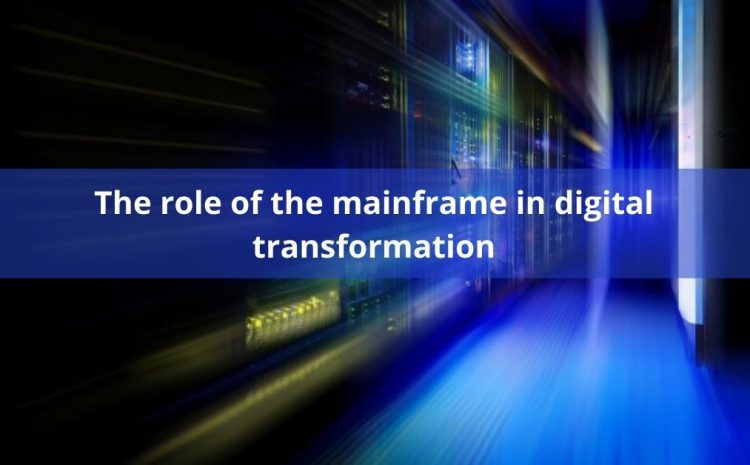Today’s economy centers around the idea of technologies being connected, the enabler of what many are calling digital transformation. With larger enterprises still relying on mainframes to serve as the foundation of their technology stack, many question how to power leading-edge processes that enable real-time customer experiences and great efficiencies, using what are often considered to be legacy technologies. What may surprise people is that the mainframe remains a powerful tool for driving digital transformation.
It all comes down to creating the connected mainframe.
A recent IDC study found that traditional perceptions of the mainframe being an outdated technology are inaccurate; respondents showed that the mainframe has the potential to play a central role in digital transformation. In fact, the study found that the general belief among industry practitioners is that the connected mainframe can serve as the foundation of an enterprise-wide expansion.
How the connected mainframe drives digital transformation
How can the connected mainframe drive digital transformation? To begin with, the mainframe can be a provider or a consumer in the API economy. With the right tools, the mainframe can produce applications to power mobility, modern web-based processes and more. It allows for a faster time to market due to the use of already-adopted technologies and for innovative app development for today’s demanding customers. The mainframe’s ability to handle DevOps ensures the timely release of reliable applications in order to keep up with the fast-paced API economy.
Additionally, mainframes can easily adapt to today’s big data demands by monitoring numerous processes from a single source. By partitioning the mainframe, users can create environments that rival today’s cloud and virtual machine spaces, while still working within their secure environments. The result is a trusted space for enterprises to collect and analyze their structured and non-structured data, allowing them to easily keep up with today’s industry demands.
Lastly, the connected mainframe allows enterprises to efficiently implement cognitive computing. With machine learning and AI technologies flooding the market, these technologies remain useless without the proper data to mine, analyze and identify patterns within. While a common trend is to abandon the mainframe for modern technologies to drive these changes, the mainframe can backend cognitive computing processes by building applications on top of its established data repository. This leads to a more defined AI environment that pulls from the full gamut of data across numerous channels, effectively removing the need to rebuild a database.
Why consider using your mainframe for digital transformation?
First and foremost, using the mainframe to drive digital transformation is cheaper. In fact, IDC’s study found that operating costs for mainframe technologies dropped 35% once the mainframe was integrated with modern solutions. These cost reductions came from licensing fees, staff management and even power and facilities costs – as well as the benefit of not having to pay for the implementation of and training on a new system.
By keeping the mainframe in the fold, enterprises also benefit from baseline familiarity with the systems that are currently handling their operations, as opposed to uprooting everything and starting from scratch. Instead, mainframe integration solutions can be implemented to power the mainframes with modern user interfaces, allowing IT teams to easily work and innovate within the new environments without extensive training.
Finally, mainframes offer stability, as they are the backbone of many enterprises. From their increased security – compared to cloud-based systems – as well as their ability to easily handle enterprise-wide data and assets, mainframe shouldn’t be viewed as older technology. Instead, they must be viewed as the stable foundation to drive future innovation.
In short, the mainframe is here to stay
When it comes to the mainframe, we must remember that it is a critical component of the digital economy. As professionals, we must change our way of thinking of the mainframe as outdated and instead understand its ability to continue powering innovative business operations. If any mainframe-based enterprise is looking to cut costs, increase stability, and drive digital transformation, they should start by embracing what has powered them to this point and celebrate the legacy of the mainframe.
Visit : Mainframe Managed services



